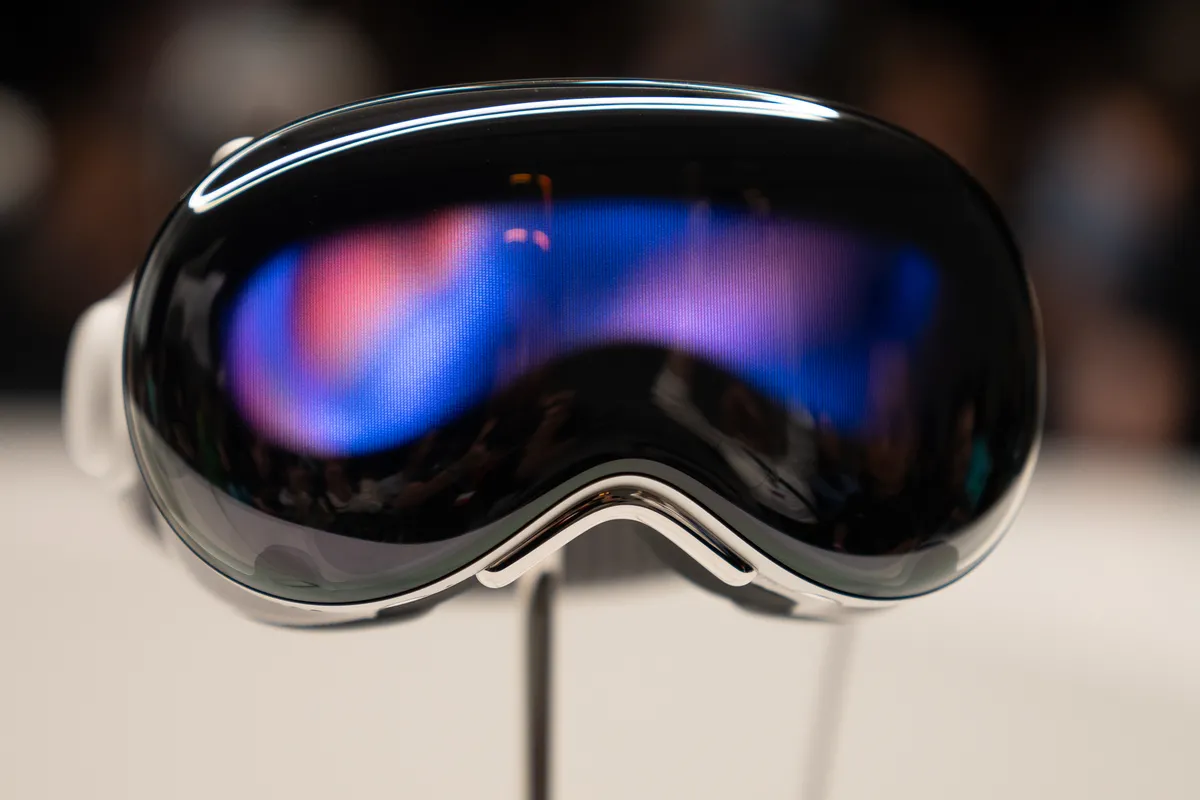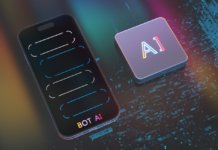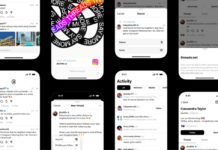Let’s see what exactly the Vision Pro does and how it compares to other headsets on the market.
Apple has recently unveiled its Vision Pro headset, a mixed-reality device that combines augmented reality (AR) and virtual reality (VR) in one sleek package. The headset, which costs $3,499, is Apple’s first major hardware launch in almost a decade and promises to revolutionize the way we interact with digital content.
What does it offer?
Here are some key features and facts you need to know about Apple’s latest innovation.
1. Stunning display for each eye
The Vision Pro has a 4K display for each eye, which means you can enjoy high-resolution images and videos in both AR and VR modes. The headset also has a 120Hz refresh rate, which reduces motion blur and latency. Apple claims that the Vision Pro offers a “Retina display moment for headsets”, meaning that once you use it, you won’t want to go back to lower-quality screens.
2. 12 Cameras and 5 sensors
The Vision Pro is equipped with 12 cameras and 5 sensors, which enable it to track your head, eye, hand, and body movements, as well as scan your surroundings and create a 3D map of your environment. The cameras also allow you to switch between AR and VR modes by adjusting the opacity of the lenses. You can see the real world with virtual objects overlaid, or immerse yourself in a fully digital world.
3. Powered by two chips
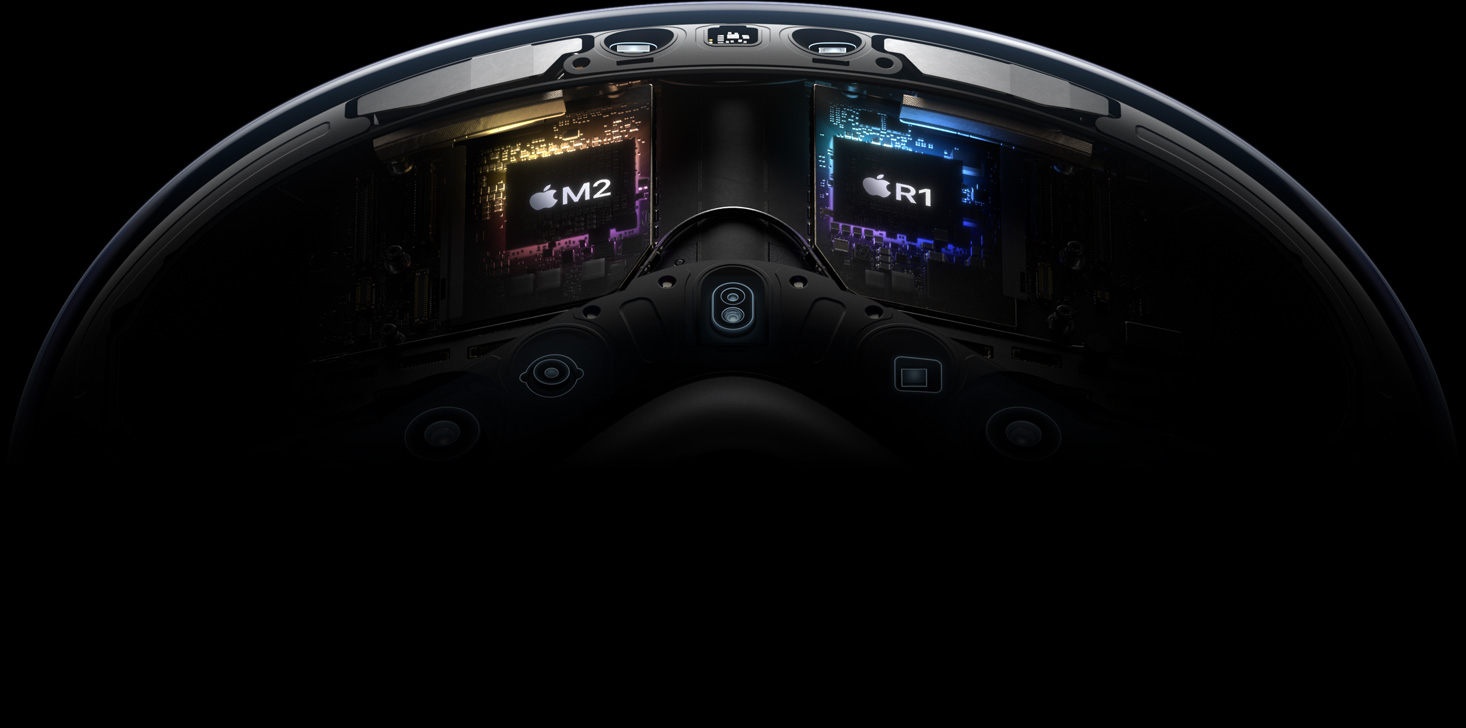
The Vision Pro runs on two chips: the Apple M2 and the R1. The M2 is the same chip that powers the latest MacBook Air and MacBook Pro models and provides fast performance and low power consumption. The R1 is a new chip that handles the spatial computing tasks of the headset, such as rendering graphics, processing sensor data, and generating sound. The two chips work together to deliver a smooth and realistic mixed reality experience.
4. New operating system called visionOS
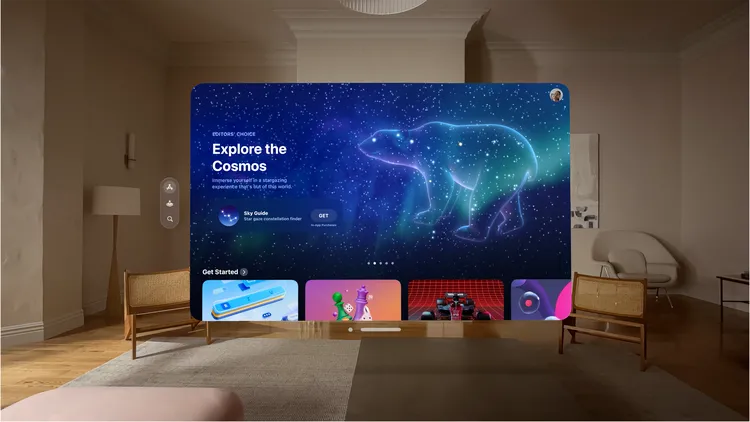
The Vision Pro runs on a new operating system called visionOS, which is designed specifically for mixed reality applications. The visionOS has a familiar interface with app icons arranged in a grid but also supports gestures, voice commands, and eye tracking as input methods. You can access apps, watch movies, write documents, play games, and more in a virtual world.
5. No physical controllers
The Vision Pro does not come with any physical controllers or buttons. Instead, you can control the headset using your eyes, hands, and voice. You can select items by looking at them or tapping your fingers together, scroll by flicking your fingers, zoom by pinching your fingers, and so on. You can also use voice commands to launch apps, adjust settings, or ask Siri for help.
6. Two-hour battery life
The Vision Pro has a two-hour battery life, which is not very impressive compared to other headsets on the market. However, Apple says that the headset comes with a separate wired battery pack that you can attach to your belt or pocket to extend the battery life up to six hours. The battery pack also acts as a wireless charger for your iPhone or AirPods.
7. Compatible with other Apple devices
The Vision Pro is compatible with other Apple devices like your iPhone, iPad, Mac, Apple TV, or AirPods. You can use your iPhone as a secondary display or a remote control for the headset. You can also stream content from your iPad or Mac to the headset via AirPlay and pair your AirPods with the headset to enjoy spatial audio.
8. Two sizes and four colors
The Vision Pro is available in two sizes: small and large. You can measure your head size using an app on your iPhone or iPad to find the best fit for you. The headset also comes in four colors: black, white, blue, and red. You can customize your headset with different straps and lenses.
Release date
The Vision Pro will be released in early 2024 in the US, with more countries coming later next year. You can pre-order the headset starting from December 2023 on Apple’s website or app. You can also try out the headset at selected Apple Stores next year.
Competitors
The Vision Pro is not the only mixed-reality headset on the market:
Meta: formerly known as Facebook, has its Quest Pro headset, which costs $449 and also lets you switch between VR and a limited form of AR.
Lenovo has its ThinkReality A3 headset, which costs $1,499 and is aimed at enterprise users.
Microsoft has its HoloLens 2 headset, which costs $3,500 and is focused on industrial applications.
Potential applications
The Vision Pro has potential applications in various fields, such as education, entertainment, gaming, health, tourism, and more. You can use the headset to learn new skills, watch immersive movies, play realistic games, monitor your fitness, explore new places, and more. The headset also supports third-party apps and developers, which means you can expect more content and features in the future.
Conclusion
The Vision Pro is a risky but ambitious move by Apple, as it ventures into a new market of head-mounted devices that are still niche and unproven. The headset is also very expensive and bulky compared to other Apple products. However, Apple has a history of overcoming skepticism and creating new categories of devices, such as the iPod, the iPhone, and the iPad. The Vision Pro could be Apple’s next big thing or a flop – only time will tell.
Read more: Vivo Flying Camera Phone






